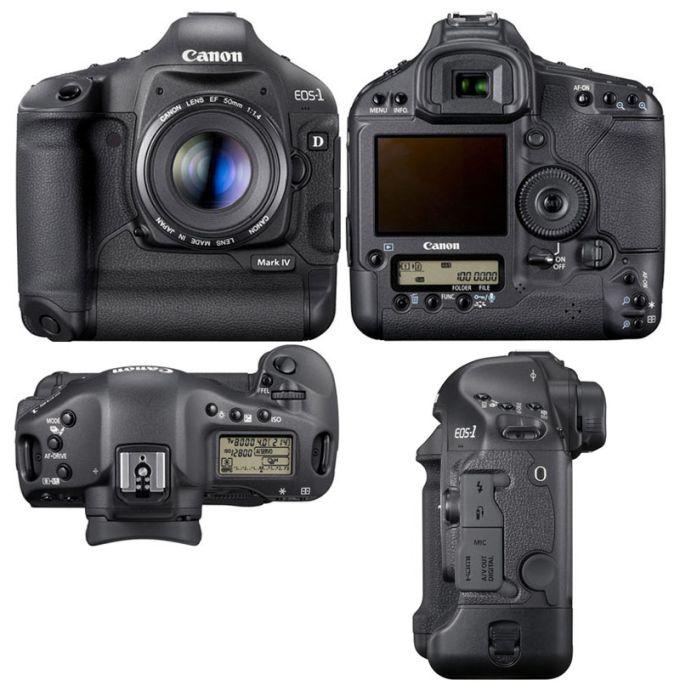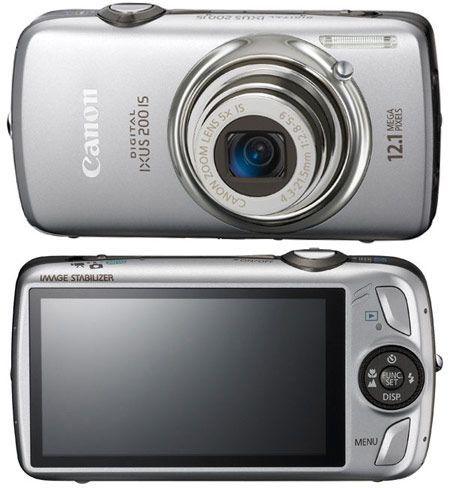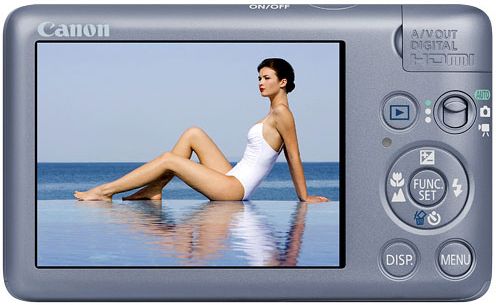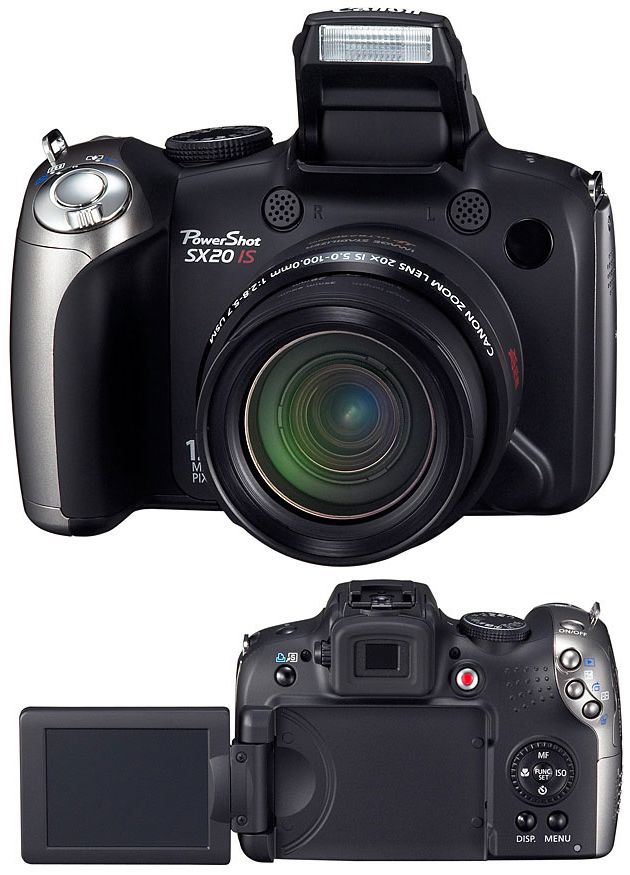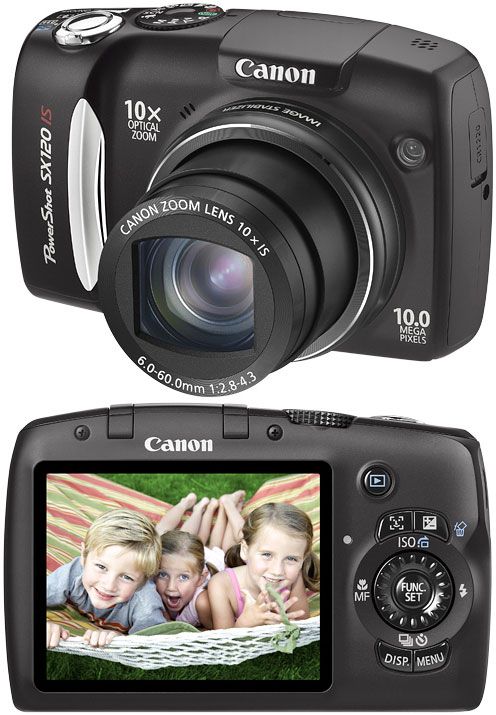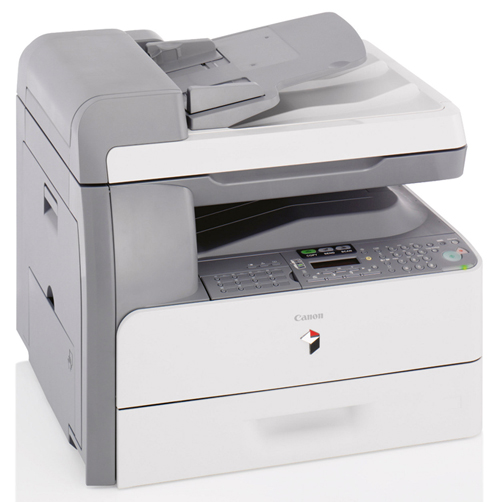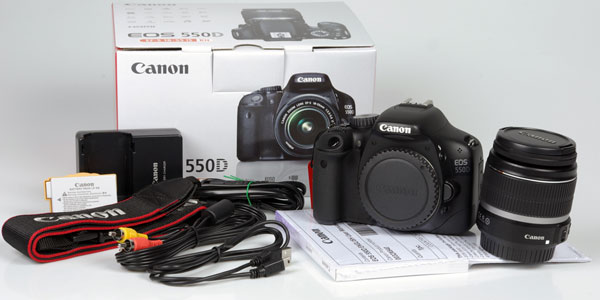Canon EOS 1D Mark IV Digital Camera
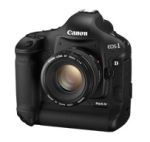
EOS 1D Mark IV Ideal for shooting video, sports events, reports and wildlife, providing speed and high resolution.
Designed with the wishes of professional photographers EOS 1D Mark IV equipped with a new Canon CMOS matrix with 16.1 MPAPS-H size and a completely new system of 45-point AF with 39 cross-type sensors with a f / 2.8 sensitivity, which provides a wide selection of areas for precise focusing throughout the frame. Two DIGIC 4 processors provide continuous shooting of images in high resolution with a speed of up to 10 frames per second, as well as the widest range in the Canon range ISO.
"When developing the EOS 1D Mark IV, we carefully studied the reviews of photographers and sought to ensure that the camera met their requirements, - said Mr. Shinbori (Shinbori), general manager of Canon's camera development center. - Thanks to the newest CMOS matrix and two processors DIGIC 4 Canon EOS 1D Mark IV will allow professionals working in the highly competitive field of photo illustrations for the press to obtain images of the highest quality. "
Highly sensitive auto focus system: capture every detail
Canon EOS 1D Mark IV has an entirely new 45-point systemautofocusing with 39 cross-type sensors providing stable automatic focusing on fixed or moving subjects regardless of the AF point used. All 45 points are user-selectable and are now more sensitive: AF points at the edge of the frame are just as effective as the points in the center.
The entire autofocusing system is controlledspecial microprocessor, providing fast, accurate focus, even with continuous shooting at a rate of up to 10 frames per second. Advanced autofocus system AI Servo II AF Canon provides greater accuracy whentracking moving objects. For this purpose, as well as to increase the reliability of focusing at low contrast and too high brightness, a special microprocessor is used.
The camera provides many options for manual and automatic focus control, including a button AF Stop lens, which controls a new function of spot AF Spot AF. Spot AF provides an even more accurate focus area. The 63-zone exposure metering system makes it possible to use several measuring modes with the help of a special sensor AE, connected with 45 AF points. Thus, exposure metering can also be performed on the autofocus point associated with the measurement zone, and over several zones.
EOS 1D Mark IV It also has the ability to link focus pointswith the orientation of the camera in space. This function allows you to store separate AF points in memory for different camera positions. Autofocus points associated with the orientation provide the ability to quickly change the orientation of the camera while maintaining the automatic focus in the desired area in both horizontal and both vertical positions. Registering an AF point makes it possible to save an alternative AF point, which can be switched to by pressing a single button.
Power and performance of two DIGIC 4 processors and CMOS matrix
The combination of a specially designed CMOS matrix with a high resolution of 16.1 MP size APS-H and two processors DIGIC 4 provides detailed, clear images at high speed shooting.
Matrix APS-H Is a large number of pixels and an effective fieldvision with a 1.3-fold increase in lens focal length. This provides significant advantages for photojournalists shooting sporting events, reports or wildlife that need to bring the subject closer to shooting and requires high-speed optics without the use of long-focus lenses, which are usually significantly heavier.
Continuous shooting is performed usingsensor with eight-channel data reading, which uses two DIGIC 4 processors to maintain high-speed shooting up to 10 frames per second at a full resolution of 16.1 MP. Excellent color rendering provides 14-bit conversion of analog signal to digital.
The ability to shoot at a rate of 10 frames per second without reducing the resolution means that EOS 1D Mark IV characterized by the fastest continuous shootingwith autofocusing from all Canon digital SLR cameras. Despite the increase in resolution and the increase in the number of processed data by 60%, two DIGIC 4 processors with increased processing power provide the ability to continuously capture up to 121 frames in a format Large JPEG or 28 - in the format RAW on the map UDMA 6. This is the ideal solution for shooting sports events or reports, when the action takes place very dynamically.
The EOS 1D Mark IV also features a streamlined feature Picture Styles and first realized in a professional chamberEOS function ALO (automatic lighting optimization), automatically corrects the contrast and brightness of images during recording. These functions will be useful for photographers who need ready-to-print images right after shooting, without additional processing, and allow you to concentrate directly on the shooting process.
Full compatibility with the modern standard of flash memory cards UDMA 6 also provides fast image recording on a memory card CF. The camera also has a memory card slot Secure Digital / SDHC.
High performance in low light
EOS 1D Mark IV provides enhanced image quality in very low light conditions. Standard values ISO at EOS 1D Mark IV From 100 before 12 800, and extended - from 50 before 102 400. This is the largest ISO range in specularcameras. Thanks to this EOS 1D Mark IV is an ideal camera for shooting night or evening scenes - even those that previously were impossible to capture due to lack of light.
Intelligent noise reduction technology reducesto a minimum of luminance and color noise, while retaining a color balance, but never controls the overall quality of the image by taking a decision instead of a photographer. The architecture of the new matrix Canon CMOS 16.1 MP APS-H with microlenses without gaps, smaller areaauxiliary elements and more sensitive photodiodes with a large dynamic range ensures the maximum efficiency of the maximum ISO values in low light conditions.
Created for use in extreme conditions: reliable, moisture-proof and portable
Very light for its category, the camera EOS 1D Mark IV is characterized by a body made entirely ofMagnesium alloy, which provides protection from bumps and scratches. The shape of the buttons has been changed and become more ergonomic, pressing a more precise click makes it easier to use the device in difficult weather conditions, when gloves may be required.
EOS 1D Mark IV is protected by 76 rubber seals around the control buttons and seams on the body, therefore it is waterproof and dustproof when used in conjunction with the Canon EF all-weather lens range and flares Speedlite EX.
LCD Clear View II (920 000 points,VGA-resolution) makes it easy to view pictures and videos in difficult lighting conditions. Because the gap between the LCD panel and the protective coating is filled with elastic optical material, Canon was able to reduce the reflection of light, which increased the clarity of the image. Acrylic coating has been replaced with glass of increased strength, which provides reliable protection of the screen and resistance to scratches.
EOS 1D Mark IV is also equipped with integrated EOS cleaning system, which automatically cleans the dust from the sensor and provides a high quality image when shooting in an open area.
Movie mode, high definition video
In addition to high-quality photos, Canon EOS 1D Mark IV able to shoot high-definition video 1080p with a speed of 30, 25 and 24 frames / s and 720p - with a speed of 60 and 50 frames / second. Full compatibility with standards PAL and NTSC, typical for the movie mode 1080 / 24p, as well as fully manual exposure selection, allowing you to control the depth of field will be appreciated by film and video operators.
EOS 1D Mark IV allows you to assign a button to quickly start a video, which will allow you to begin shooting high-definition video with just one click. The EOS 1D Mark also has a mini-connector HDMI, allowing you to view videos and photos directly on compatible TVs that support the HD standard.
Advanced customization options
The user can adjust the EOS 1D Mark IV Canon parameters, which provides full control over camera functions. Microswitching automatic exposure (AE) and exposure when shooting with flash (FE) allows photographers to receive accurate exposure inany conditions, accurately adjust two separate chambers to obtain the same results or adjust in accordance with their individual requirements. The settings selected by the user can be stored on a memory card and transferred to other EOS 1D Mark IV cameras.
Among other functions worth noting the inputinformation about copyrights directly in the camera. Photographers can add their details to every photo, which eliminates the need for subsequent data entry and enables you to transfer photos to the editor in the shortest possible time. The built-in microphone also allows you to record audio notes to each image.
Canon EOS 1D Mark IV - main features:
- New Canon CMOS APS-H sensor 16.1 megapixels
- Continuous shooting at 10 frames per second
- Up to 121 Large JPEG images when shooting with a series
- A new 45-point wide-area autofocus system with 39 cross-type sensors and a f / 2.8 sensitivity
- Two high-speed DIGIC 4 processors for superior image quality
- Record video in Full HD 1080p at 30, 25 and 24 frames per second
- 3-inch ClearView II LCD monitor with Live View support
- Durable dust and waterproof housing with 76 rubber seals
- Compatible with all EF lenses and Canon's Speedlite EX
- Also available is the new wireless transmitter WFT-E2II (compatible with the existing wireless file transfer WFT-E2)
Accessories
Compatible with EOS
The EOS 1D Mark IV is compatible with all existing EOS 1D Mark III accessories, system lenses EF (except EF-S lenses) and flashes Canon Speedlite series EX. Unlimited possibilities of shooting and transfer of images became available thanks to the additional wireless file transmitter WFT-E2II. The new EOS 1D Mark IV accessories are also compatible with previous versions of the EOS 1D Mark III (after firmware upgrade).
Technology Description
Canon CMOS Sensor
Developed by Canon and working with processors DIGIC CMOS technology from Canon is equipped with an advanced noise reduction scheme at each pixel site, which allows images with virtually zero noise. Compared with technology CCD matrixes CMOS characterized by a lower power consumption, thereby increasing the battery life.
In the Canon CMOS matrix, the signal is convertedseparate amplifiers located at each pixel site. Thus, it is possible to avoid unnecessary steps in the process of charge transfer and to accelerate the time of signal transfer to the image processor. This allows you to reduce noise, limit power consumption and improve the speed of shooting.
The architecture of the BEAR matrix has been improved forobtaining maximum photosensitivity and natural color reproduction. Despite the smaller pixel size, optimized, more sensitive photodiodes with a high signal-to-noise ratio and higher capacity collect and transmit more optical information to two processors DIGIC 4. This achieves high ISO sensitivity, low noise and a wide dynamic range.
Among the additional features to reduce noise and support a higher ISO sensitivity:
- microlenses without gaps, shifted to photodiodes to maximize the sensor's ability to concentrate light rays;
- microcircuit for applying high gain, suppressive noise outside the sensor
AI Servo II
Autofocus system AI Servo uses intelligent autofocus (AI)to determine the speed and direction of movement of objects, and then focuses the lens in the predicted position (the preset focus function) to ensure that sharp photos are obtained.
Given the importance of AI Servo in modern high-speed cameras the systemBEAR auto focus has been improved and is now able to accurately track objects moving at different speeds and at different distances. A higher processing speed made it possible to improve tracking and focusing in macro photography.
AI Servo II The following autofocus functions have been improved.
- Stable lens movement: In normal mode, the AI Servo algorithm performs calculations, and based on their results, the lens changes focus. Now, if the algorithm gets two results that are very different from each other (for example, the object quickly changed direction and did not end up where the system intended), then this calculation is ignored and the system does not transmit the command to the lens until the two results coincide . This means that the errors that occur do not lead to a sudden loss of focus.
- Reliable focusing of the subject: When an obstacle is detected or the AF point is lost, the tracking continues on the basis of the last known trajectory before it is interrupted.
- Moderate lens movement: With a radical change in the focusing distance, the lens does not translate directly to this value. It is translated there gradually on the basis of the latest forecasting results. This means that if the photographer (involuntarily) leaves the subject for a long time, the lens will not suddenly change the focus to the background. This, in turn, means that if the photographer again points the AF point to the subject, the lens can quickly achieve a clear focus.
- Predictive / proactive management with morefast reaction time: Now the system can instantly achieve predictive focusing as soon as the object starts moving; The tracking delays are no longer there.
Two DIGIC 4 processors
Image information is processed using two processors DIGIC 4 from Canon, specially created for working with the matrix 16.1 MP CMOS. The power of two DIGIC 4 processors allowsuse more advanced processing algorithms to achieve clear, natural colors and excellent white balance, improved noise reduction technology, and edit video clips shot in Full HD format directly in the camera. Excellent processing speed reduces the overall response time when controlling the camera and provides an almost instant start to work.
DIGIC microchips work together with a high-speed image buffer DDR-SDRAM. Reading, processing, compressing and recording imagesoccur quickly enough that the buffer is free during a long continuous series shooting. The buffer of two DIGIC 4 processors has also been increased to support continuous shooting mode up to 121 large JPEG files or 28 RAW files (10 frames / s) with high resolution. In addition, since DIGIC 4 processors are involved in all major processing functions, power consumption is minimized.
Working in tandem with a CMOS matrix from Canon,DIGIC 4 processors eliminate noticeable noise of the color signal and reduce the noise of brightness without loss in the display of parts, providing very sharp images with high ISO sensitivity. Even at ISO 6400, the noise levels are identical to those observed at a sensitivity of 1600 using DIGIC III processors. Two DIGIC 4 processors also support image formats M-RAW and S-RAW, often used by newspapers and magazines. Thus it is possible to save the advantages of the RAW format, while reducing the file size.
Clear View II LCD Screen
LCD Monitor BEAR with a diagonal of 3 inches has 920,000 points (VGA resolution) and a viewing angle of 160 °. Technology Clear View II was created to neutralize the glare due to theeliminating the air gap between the protective coating of the LCD screen and the liquid crystal surface. This air layer is filled with elastic optical material. Due to this, the light reflections reflected by the surface of the liquid crystal are reduced, which result from a significant change in the refractive index when light rays pass through the air layer.
Shooting video
The EOS video shooting function allows users BEAR record videos in 1080p HD format with the possibility of fully manual control and choice of shooting speed.
Due to the large size of the built-in matrixCMOS (28,1x18,7mm) photographers can better control the depth of field. Exposure of video frames can be controlled in manual mode with full control over shutter speed and aperture. The frame rate selection is available: 30 (29.97), 25 and 24 (23.976), and the available at 720p values of 60 (59.94) and 50. Program mode also allows photographers to easily shoot video in HD mode without worrying about the settings exposure. This is the ideal solution for cases where the bill is for a split second.
Picture Style
Function Picture Style with preset modesgreatly simplifies the quality control of images in the camera. Preset Picture Style modes can be compared with different types of film, having a different level of sensitivity. Within each preset mode, you can adjust the sharpness, contrast, tone and color saturation. The factory settings of the camera allow you to quickly start working with JPEG images without having to set additional parameters in the menu. When shooting in RAW format, the preset Picture Style modes allow you to edit the resulting images using the Canon software Digital Photo Professional.
Six pre-set shooting modes include the following.
1. Standard: provides bright and reliable color rendering, does not require post-processing
2. Portrait: optimizes tone and color saturation, reduces image sharpness for a pleasant skin tone
3. Landscape: increases the saturation of green and blue, as well as sharpness, providing a more accurate image of mountains, trees and building outlines
4. Neutral: ideal for post-treatment
5. Plausible: adjusts the color during shooting at a color temperature below 5200K
6. Monochrome: suitable for monochrome shooting using various filters (yellow, orange, red and green) and toning (sepia, blue, purple and green).
In the BEAR camera pre-installedPicture Style shooting modes allow you to achieve higher sharpness (in all the presets except for the "Fine Colors" and "Neutral" modes), which allows photographers to obtain files ready for printing directly from the camera.
Automatic Light Optimizer
Automatic lighting optimization (ALO),enhanced with face recognition technology, automatically corrects brightness and contrast for underexposed images, low contrast images or taken under conditions where objects are brightly lit from behind. Using the algorithm used by DIGIC 4 to process and correct images with low noise, the correction is made without affecting the natural shades. You can set and apply the correction modes "Standard", "Low", "Strong" or "Disabled" to the image.
In the BEAR camera, the automatic optimizerlighting can operate in manual exposure mode. Correction is based on the exposure set by the user, and is especially effective for shooting under backlight conditions when the subject looks dark. Usually, if an object is illuminated, the background becomes overexposed. However, with the automatic light optimizer installed, both the object and the background can be successfully exposed.
Built-in EOS cleaning system
Built-in cleaning system EOS fights dust on the matrix in three ways: preventing the appearance of dust, repelling and eliminating it.
1. Prevent the appearance of dust: the internal elements of the camera are designed in such a way as to reduce the occurrence of dust. Camera body prevents dust when worn
2. Dust repulsion: The low-pass filter located in front of the image matrix is created using an antistatic material, so it repels dust.
3. Dust removal: The self-cleaning image sensor uses high-frequency oscillations to "shake" the dust from the infrared filter for about one second after each switch-on. For instant start of shooting after power-on, this function is immediately turned off when the shutter is released
Canon also developed an internal system Dust Delete Data, which determines the position of the visible dust particles on the image matrix. After shooting, traces of this dust can be automatically deleted using the latest software version Digital Photo Professional.
Software Digital Photo Professional
Software Digital Photo Professional designed for high-speedHigh-quality processing of images in RAW format recorded without loss of quality. It allows you to display images in real time, as well as instantly view the results of the changes made, giving full control over the parameters of RAW-files: white balance, dynamic range, exposure compensation and color shades. The lens aberration correction means is designed to accurately correct various types of distortion in certain cameras. Pictures can be saved in the sRGB or Adobe RGB color space.
Program Digital Photo Professional supports color spaces sRGB, Adobe RGB, ColorMatch RGB, Apple RGB and Wide Gamut RGB. Profiles ICC can be applied to TIFF orJPEG when converting from RAW format. This guarantees accurate color reproduction in programs that support ICC profiles, for example in Adobe Photoshop. Image settings can be saved and then applied to other images, which will also help improve the efficiency.
EOS application
In the latest version of the application EOS Utility added support for remote shooting in mode Live View, camera configuration and migration capabilitiesimages. Together with Digital Photo Professional, you can configure the EOS application to control hot folders, which will automatically rename and move the transferred images to a structured file system. Users can also tag their images with EXIF data, including copyright information.
Picture Style Editor
Picture Style Editor allows photographerscreate individual image styles that meet their personal requirements. Each style of the Picture Style contains detailed information about the use of certain colors. After creating a new style, you can directly upload it to the camera and apply it to JPEG or RAW images. When working with RAW format files in DPP, personal and preset styles can be adjusted.
